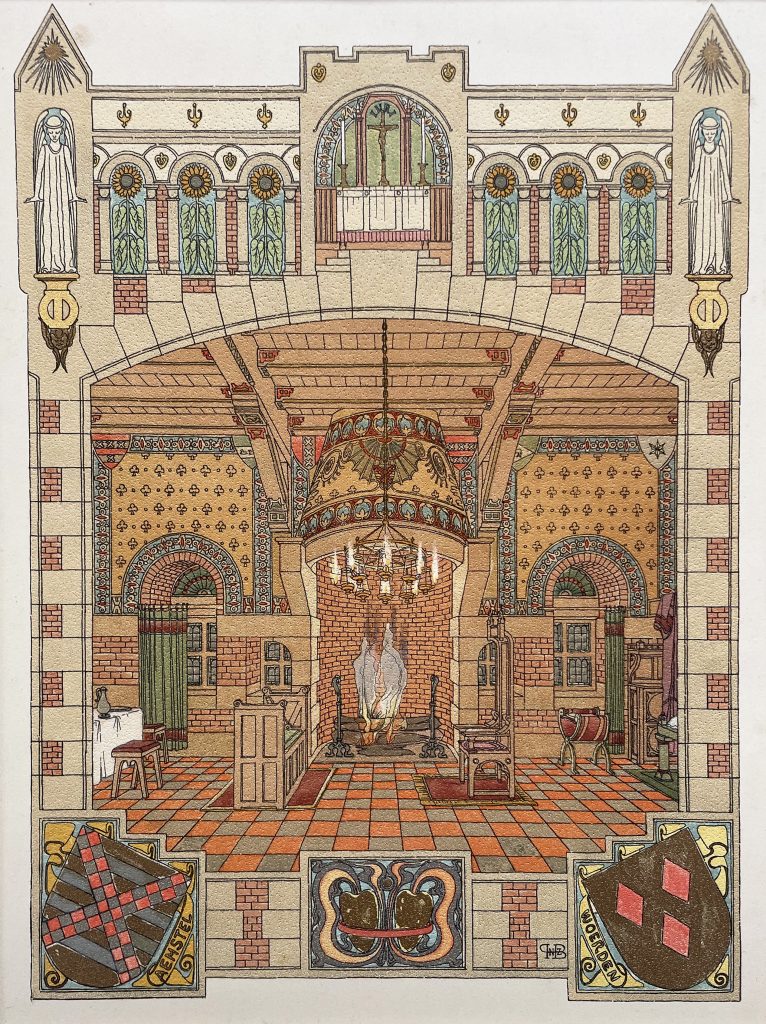Berlage, Hendrik Petrus
“Set design for Vondel's play Gijsbreght van Aemstel”
size
43,5 x 32,5 cm
medium
lithograph
year
1893
Gijsbreght van Aemstel is a play by the Dutch writer Joost van den Vondel, which deals with the downfall of the city of Amsterdam and the exile of Gijsbrecht van Aemstel. H. P. Berlage was born in Amsterdam in 1856 as the child of wealthy, liberal parents. He studied from 1874 to 1875 at the Rijksakademie van Beeldende Kunsten in Amsterdam. After this, in 1875 he started studying at the Bauschule of the Swiss Polytechnic, since 1911 called the Swiss Technical University Zurich (ETH), in Zurich, where he came into contact with the ideas of the architects Gottfried Semper and Eugène Viollet-le-Duc. In his classical architectural style, Semper's theories are particularly evident. After his studies, Berlage went to work at the office of Th. Sanders, with whom he entered into partnership in 1884. Together they designed several buildings in the Neo-Renaissance style. In 1889, Berlage started working independently. Initially, he mainly designed in the neo-styles common at the time (Focke & Meltzer shop, Kalverstraat, Amsterdam), but he gradually began to experiment with a mixture of Rationalism and Art Nouveau. This is particularly visible in the designs for the insurance company De Nederlanden van 1845, for which he worked as house architect, for example on the Muntplein in Amsterdam. These buildings already herald Berlage's stock exchange and were also partly the reason why alderman Willem Treub put forward Berlage as the architect of the new Koopmansbeurs (Merchants' Exchange) in Amsterdam. Berlage's style expressed the ideas that Berlage and Treub shared: radical liberalism, a political movement that can be seen as a forerunner of social democracy. Berlage considered his last work, the Haags Gemeentemuseum, now the Kunstmuseum Den Haag, as his best. He did not live to see its completion. He died in 1934 in The Hague, Netherlands.
